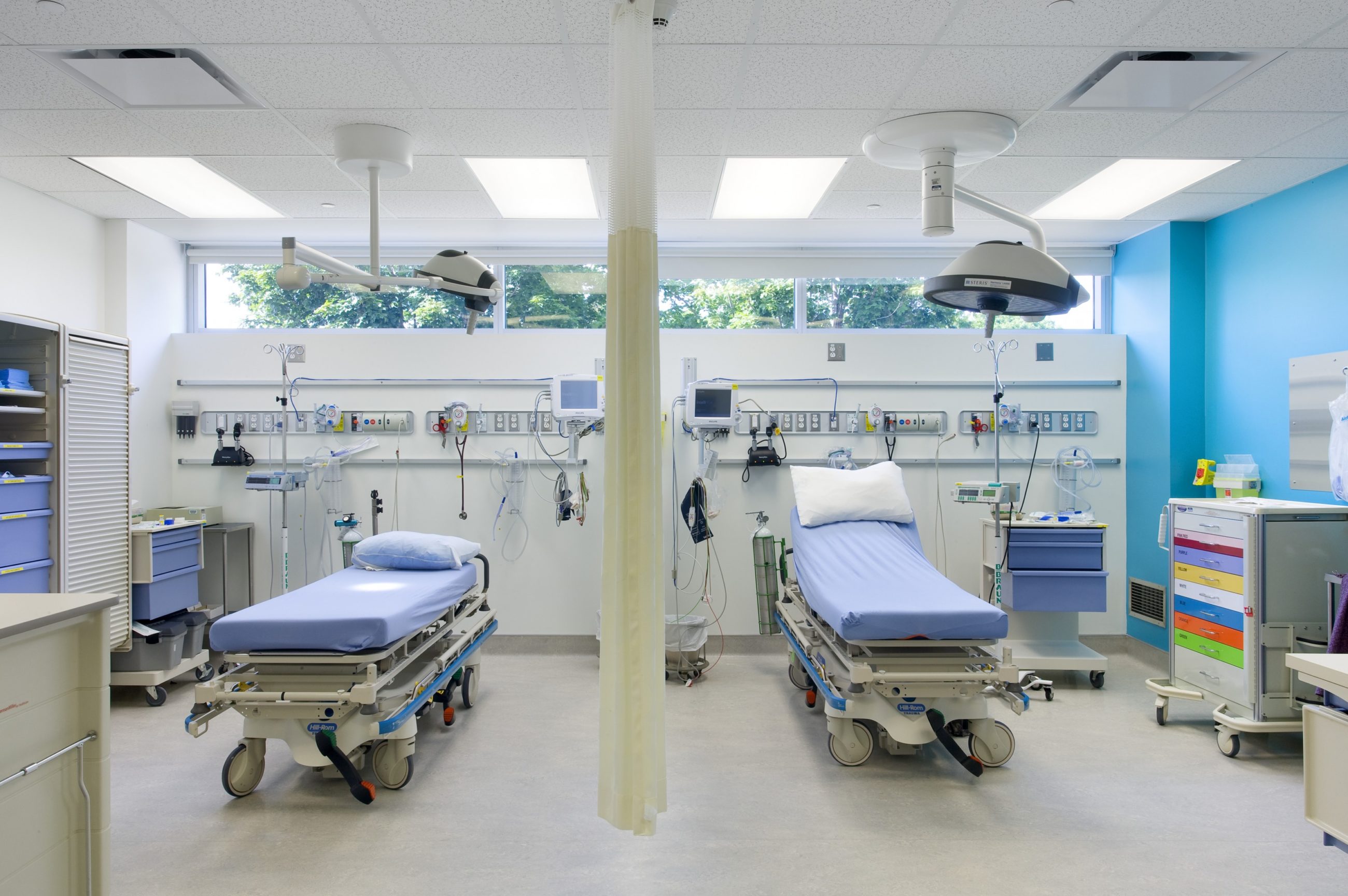
When you visit a hospital it’s likely that design isn’t the first thing you’re thinking about. Usually, you’ll be focused on health and wellbeing – either your own, or that of a loved one.
What you may not realize is healthcare planning and design plays a profound role in the healing process. Patient, visitor, and staff experiences are shaped by the physical environment and can affect anxiety levels, blood pressure, and pain medication requirements.
While there are far more considerations than listed below, here are 5 design decisions that are proven to create healthier healthcare spaces1:
1. Presence of natural light – Presence of natural light is positively correlated with patient recovery. Larger windows enhance views and increase access to sunlight, both of which have calming effects that support recovery and patient outcomes. In one study, patients in rooms with bright sunlight had a 22% reduction in their need for pain medication.
2. Views of nature – Views of nature are effective in therapy and healing, reducing patient and staff stress, reducing the use of patient medication, and increasing staff satisfaction. A renewed connection with nature has been associated with improved healing rates. Research has shown that patients whose windows overlooked a scene of nature recovered and were released after 7.96 days, on average, compared with 8.71 days for patients whose views were of the hospital’s exterior walls (a difference of 8.5 per cent).

Patients at Foothills Medical Centre’s McCaig Tower have access to plenty of sunlight and scenic views of Calgary, including the Rocky Mountains in the distance.
3. Adaptable rooms – Adaptable rooms help avoid patient transfers within a hospital and to different facilities. This reduces delays, in-room accidents and medication errors. Accommodating larger patient bathrooms with double-door access reduces falls; enabling caregivers to assist patients using the bathroom. Ceiling-mounted patient lifts prevent strains and injuries associated with lifting patients out of bed, reducing staff sick leave and costs for hospitals.
4. Larger, single-patient rooms – Larger, single-patient rooms in hospitals are typically preferred by patients. They allow easier care by family members and are factors in increasing patient satisfaction. Single rooms have the added benefit of reducing the spread of disease and the incidence of hospital contracted infections, falls, and medication errors. With modern hospital construction in the U.S., single rooms have become the industry standard.
5. Artwork – Artwork in hospitals contribute to health and wellbeing in health care environments. Art confers numerous physical and mental health benefits, including improved recovery times; reduced workplace stress; lower levels of patient anxiety, depression, and stress; shorter patient hospital stays; reduced need for pain medication; improved communication between patients and care providers; and support long and healthy lives and improved job satisfaction for staff, as well as having a positive influence on recruitment and retention.

At Edson Healthcare Centre, DIALOG’s interior design team partnered with the Edson Photography Club to support local photographers while providing patients with familiar sights from around their hometown.
These insights, and more, are available in our report Community Wellbeing: A Framework for the Design Professions. Download your free copy today.